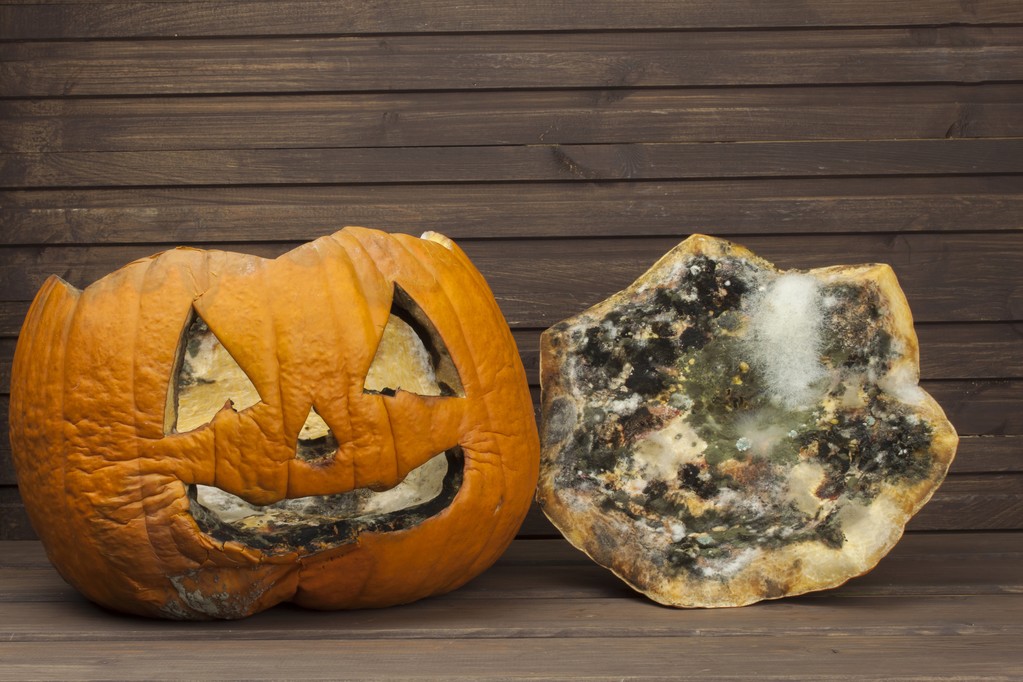When food forms mold, the question often arises as to whether it is still edible or should it be thrown away. We have put together an overview for you on how to deal with various mold-infested foods.
If we discover a white, gray or greenish coating on food, we are faced with the decision: can it still be on the plate or should it be thrown away straight away?
It is important to know that there are different types of mold – some of them form toxic mycotoxins. These mold toxins are metabolic products of moulds.

Guidelines for food mold contamination
Basically:
Even if there is little mold infestation, you should never eat mold.
You should dispose of moldy food immediately or cut away moldy areas immediately and generously. Because mold spreads through touch and through the air and mold spores are often not (yet) visible when they develop. It is therefore better not to take unnecessary risks.
By the time mold becomes visible on the surface of a food item, it has often already infected the interior.
Water-rich foods should be discarded even if they are only mildly moldy. Mycotoxins spread very quickly in water-rich foods such as fruits and vegetables. The same applies to foods made from fruit or vegetables rich in water, such as compote or juices.
If you are unsure, throw away the moldy food. In the worst case, mold can be harmful.
Examine adjacent fruit or vegetables. To be safe, wash it off and then rub it dry. If necessary, cut away the spot that was near the mold and eat the rest immediately. If the mold has already spread, discard any affected food.
Under no circumstances should you feed moldy food to animals. Mold is just as harmful to them as it is to humans.
Foods to throw away if mold is present
Fruit and vegetables: You should completely dispose of fruit and vegetables containing water and products made from them, such as juices or compotes, even if there is only a small amount of mold infestation. Firmer varieties such as carrots, potatoes, cauliflower, apples and bananas can usually be generously cleaned of mold and eat the rest.
Citrus fruits: The same applies to citrus fruits such as lemons, tangerines or oranges as to water-rich fruits and vegetables. Unfortunately, you have to throw away the whole fruit.
Milk and dairy products: You should also throw away products such as yoghurt, quark or cream cheese if they go moldy. The same applies to milk alternatives and products made from them.
Cheese: Soft cheese, semi-hard cheese and cream cheese all belong in the organic waste if there is mold. An exception is hard cheese: if it is only superficially infested, you can remove the mold over a large area. If the inside is also affected, you better discard all the cheese. An infestation of “wild” mold should not be confused with an intentional addition of noble mold in some types of cheese.
Sausage and meat: In most cases, you should completely dispose of moldy sausage and meat products. You can only simply cut away the mold on air-dried products such as ham or salami in one piece. On the other hand, you should always throw away moldy cold cuts, even if they are dried sausages. However, there are also types of meat products, such as noble salami, in which noble mold refines the taste.
Jams and marmalade: Low-sugar varieties or sugar substitutes such as sweeteners should be discarded entirely if they become moldy. In the case of varieties with a high sugar content, it is possible to generously remove only the affected area. However, the BfR recommends throwing moldy jam or marmalade in the trash.
Bread: If you see mold on a loaf or slice of bread, you should discard the product entirely. In most cases, the mold spores have already spread inside.
Nuts: Be careful with nuts. Spoiled nuts often contain aflatoxin, a potent fungal toxin. This is mainly caused by damp storage. You should therefore be particularly careful with nuts that have to be transported over long distances and check them for spoiled nuts before eating them. It doesn’t matter whether the kernel or the shell is affected: you should throw away moldy nuts completely. If necessary, unfortunately even the whole pack.
Grain and seeds: Mold on grain has usually already developed in the field or through storage. This is where you should dispose of the whole pack. The susceptible varieties include, for example, spelled kernels, wheat bran, sesame or poppy seeds. Mold can also attack flour, for example if it is stored too warm or too humid.
Dried fruits: Moldy dried fruits also belong in the trash. But be careful: often the white coating on dried fruit is just sugar deposits. For example, fine white hairs speak for mold. Mold often shows up in dried fruit in the form of black dots inside.
Spices: As with nuts, moldy spices produce the highly toxic substance aflatoxin. Therefore, throw away affected spices completely. Mold develops, for example, when you hold the spice container over the steaming dish: heat and moisture promote mold growth.
